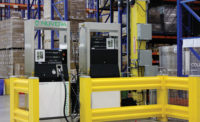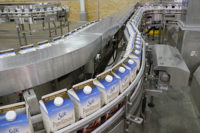Energy efficiency is always on the agenda for ENERGY STAR, and with many companies approaching their 2020 energy and climate goal deadlines, the question now is, what’s next?
As tempting as it might be to envision a George Jetson factory of the future, the reality is that most companies rarely look beyond a 2-year payback period for projects, which fosters slower incremental change. Here are a few predictions for 10-15 years out.
Data driven. Factories of the future will have a lot more meters, sensors and connectivity to controls, analytical systems and dashboards than present day. Advances in networking the Internet of Things (IoT) and the integration of machine learning analytics will provide greater ability to keep systems optimized and running more efficiently. This new era of data-driven manufacturing, sometimes called Industry 4.0, will feature advanced analytics that enable ongoing commissioning and monitoring services that quickly identify when equipment or processes are operating inefficiently.
As data monitoring and analytical technologies become built into new process equipment and facility utility systems, it will also become easier to integrate equipment into more efficient systems.
Additionally, vendors will likely offer service packages to remotely monitor the quality and energy performance of their machines.
No compressed air. In the future, energy efficient plants will use no or significantly less compressed air than today. Compressed air is said to be the most expensive plant utility on an energy basis, and air supply systems are notoriously inefficient. In most factories today, 30% of the electricity used by air compressors is lost in leaks. That’s why many companies are phasing out compressed air and replacing with electrically driven equipment, using fans for blower applications and looking to eliminate compressed air use altogether. These companies are also moving to smaller modular systems located at the point of use for applications that still rely on compressed air rather than operate a large compressor house.
Smaller and modular plant utilities. In less energy intensive industries, new or upgraded plants will not have a central boiler room. Instead, smaller packaged boilers will produce hot water or steam for thermal applications closer to the processes they serve, which helps to reduce inefficiencies in distribution systems and reduces oversized boiler systems. Steam use will be reduced as companies continue to look for other process heating methods. Modular chilled water systems will be more common thanks to data centers, whose cooling needs are driving advances in modular and more efficient chiller systems that operate in economizer mode longer. In general, plants of the future will be designed to allow for more flexible manufacturing configurations that permit scaling production up or down. The ability to turn off equipment rather than operate a large central system during periods of lower production helps to reduce the overall fixed energy use of a plant.
More natural refrigerants. The phase-out of HFC refrigerants in Europe, California and a number of other U.S. states will require the use of alternative refrigerants. That’s why many companies are evaluating natural refrigerants as part of their greenhouse gas reduction strategies. For years, ammonia has been widely used by food processors in large systems. However, cascading systems that use carbon dioxide (CO2) offer increased energy efficiency and will most likely become more common in the future.
Electrification. In some policy circles, there is a lot of discussion of electrifying more thermal energy uses within the cold food and beverage industry to take advantage of a cleaner electrical grid powered by more renewables.
Strong energy management practices are something that any company can deploy now. Among industrial plants achieving the ENERGY STAR Challenge for Industry, we’ve seen an average energy intensity reduction of 19% within 2 years. This means that the industry doesn’t have to wait for 2028 to become more efficient.



